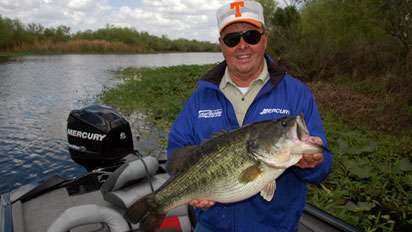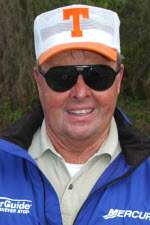
Today I’m going to talk about hard and soft bottoms.
And here’s where I better note this is about fishing and not some exercise program that we’ve all long since abandoned (despite New Year’s resolutions). What do I know about exercise, anyway? Heck, it was only recently that I learned “Buns of Steel” had nothing to do with the stale bread left out too long on the all-you-can eat buffet!
Nope, this is about bass fishing, and specifically the bottom — or the bottoms of the surfaces we fish.
I have found that bass will most often seek out a lake’s hardpan surfaces of clay, sand, gravel, etc. They simply relate more to these firmer types of bottom surfaces. Now note, if soft surfaces are all that’s present within a lake, well, bass do what they always do — they adapt. But, if given a choice, they prefer firmer surfaces on the lake bed, even to spawn.
As an example, I used to wade-fish for bass in Wapanocca Lake at a National Wildlife Refuge near Turrell, Ark. A cypress swamp-type area, I would catch bass while wading along, sometimes in water that was ankle to knee deep. Of course, while wading, I could feel the surface I was standing on, and routinely, whenever I was in soft muck, I would not catch bass. But when I would find an area where my footing became firm, I was always apt to get bit.
The same is true in most lakes. Now, why is this? Well, I’m not sure. Maybe it involves water quality, or more specifically, oxygen content. Or perhaps it’s that that algae, phytoplankton, etc., can more easily cover or grow on these harder surfaces. And when it does, the growth in turn attracts the bait or forage fish that likewise attracts the bass.
Want another example? How about boat ramps? Obviously ramps, (that are most often composed of concrete and some made simply of gravel) will attract fish. Savvy anglers often fish ramps with great results. Of course, these ramps often run a long way out into a lake to allow for fluctuating water levels. And the ramps provide an extended change in the composition of the lake’s bottom surface. Also note underwater ramps quickly cover with algae and phytoplankton.
So, the bottom line (sorry about that, I couldn’t help myself), exercise program or not, firm bottoms are good for bass fishermen, too. And when fishing, if your electronics note locales where the bottom’s surface increases in density, take time to check it out, and make some extra casts. You could land more bass.
For more words of wit and wisdom from one of our sport’s greatest legends, check out www.billdanceoutdoors.com.

